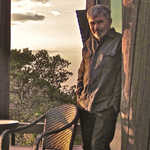We’d been eating tempura up on the main street of Ebisu, and decided to head down to Meguro. Train was the obvious choice — 1 stop. Maybe let’s walk instead then, not down the main road, via the backstreets. Quiet. Local.
We had phones but no active data access, wifi only, intermittent GPS, with a curious delay which meant we’d belatedly find that we weren’t always where we thought we were. Backstreets being what they are there wasn’t a lot of right-angles to be seen. This would prove a bit more challenging than anticipated; several times we seemed to circle around back onto ourselves and weren’t making a lot of progress. The usual trick of just standing in the street and looking slightly confused while staring at your phone paid off again and quite quickly we were joined by a local who apologised profusely for his lack of English but insisted on helping. We reassured him that his English was a tad superior to our Japanese!
He enquired as to our problem and quickly assessed the situation and had the answer. He looked pleased.
“Walk up to Ebisu station and get the train”.
He was slightly confused that that wasn’t the answer we wanted.
“Walk to Meguro… oh… hmmm… you don’t want to get the train? Why?”
Eventually he suggested that it would be best if he could walk part of the way with us and then set us off in the general direction. Try to follow the train line he said. Hmmm, an idea, and still better than following the main road.
On the way we were inspecting the architecture. The difficult task of the contemporary architect in Japan to make something out of little — to construct something imaginative beyond its physical boundaries. The form of this particular structure jumped out from the non-descript. Slightly austere, minimal in adornment. Geometric. A juxtaposition with a degree of resistance. A difference in degree and in kind. But it bore similarity too — boxes with smaller boxes carved out. Sculptural. The humanism of the vertical repetition.
History probably dictates that buildings in Japan, more so than the land they sit on, are temporary and easily disposed of and replaced. The connection between styles, materials and functionalities of buildings and their proximity to one another is a constant fascination. It is all about relationship and situation.
“Japan is often seen as a place of chaos in foreign eyes. However, I realised once again when I left Japan that what Japanese people hold at the root as their reason for things is a sense for finding beauty in completeness in relationships and situations” — Naoto Fukasawa1
-
Naoto Fukasawa is a designer, a director of 21_21 Design Sight and runs ±0 (Plus Minus Zero). ↩
Filed Under
Other moments in Tokyo
-
Conversations, World Affairs, Culture
"I'm from Libya," he said. I don't know what to say. It's as if he'd told me he'd just come from his father's funeral.
in Tokyo, Japan -
The first specialty coffee shop in Ikebukuro and Junkudo (bookstore) resonate.
in Tokyo, Japan -
film, edit
Editing is interpreting.
in Tokyo, Japan -
The Riddle of Steel.
in Tokyo, Japan -
Commutes, Cities, Underground
The man stands motionless in a crush of white-shirted salarymen, as they swarm past him, toward the single escalator.
in Tokyo, Japan -
Reve, japan, Centre commercial piscine
Rêve de centre commercial-piscine
in Tokyo, Japan -
Urban Nature, birds
Sparrow Noise
in Tokyo, Japan -
City walks
Birthday walk home
in Tokyo, Japan -
Dead Letter, Addiction
"Dear Cigarettes"
in Tokyo, Japan









